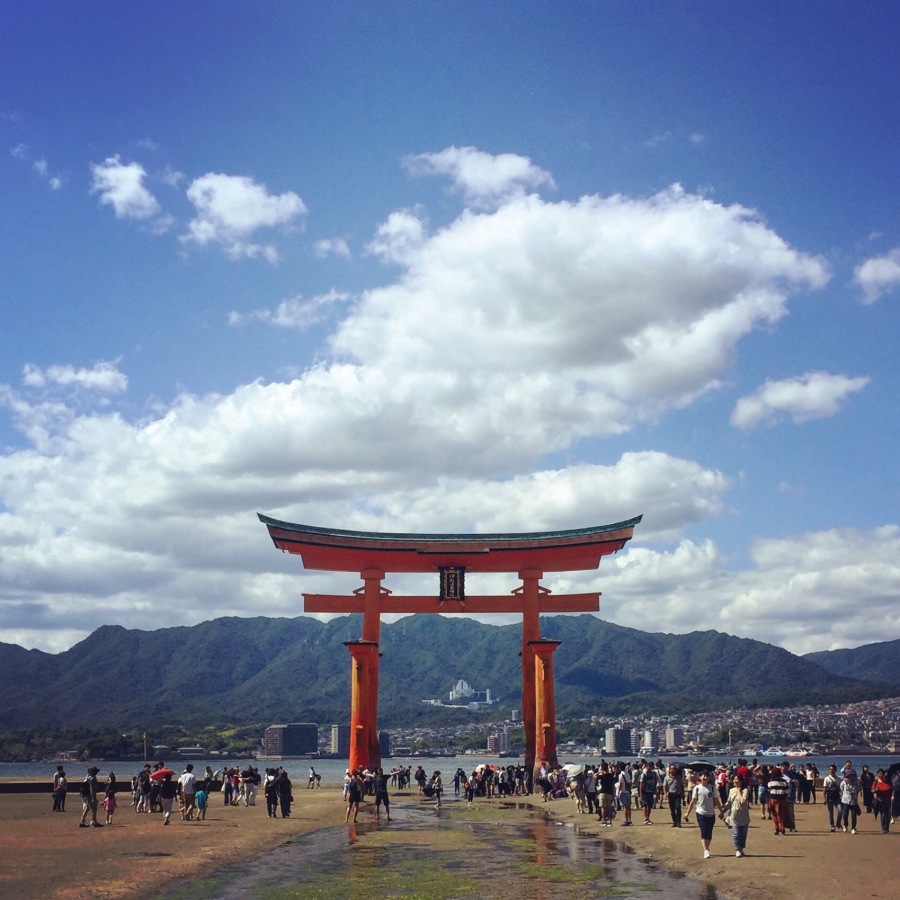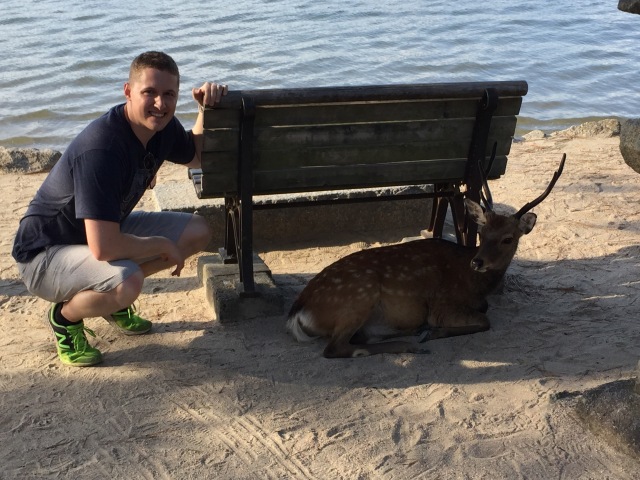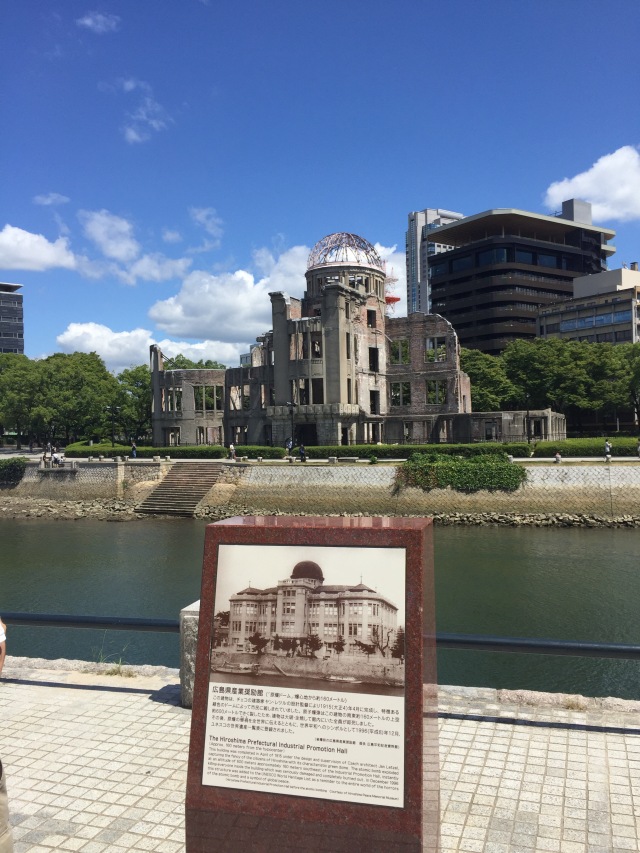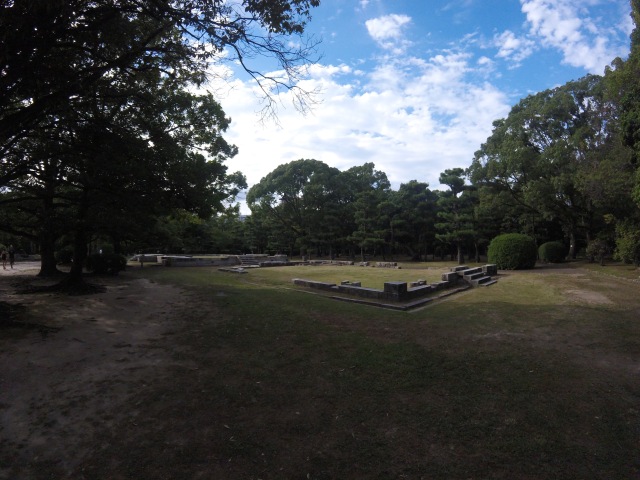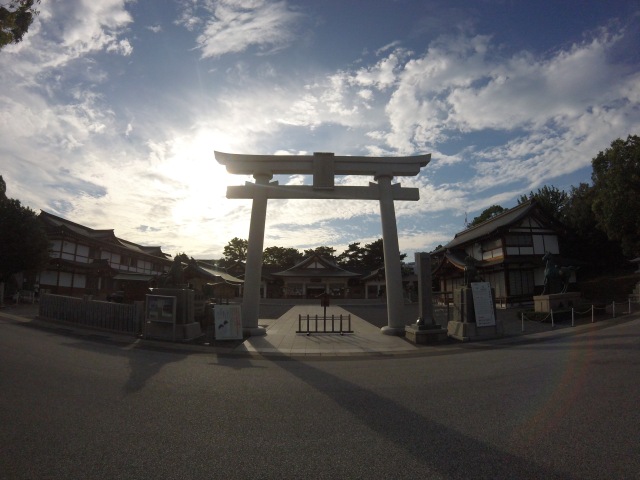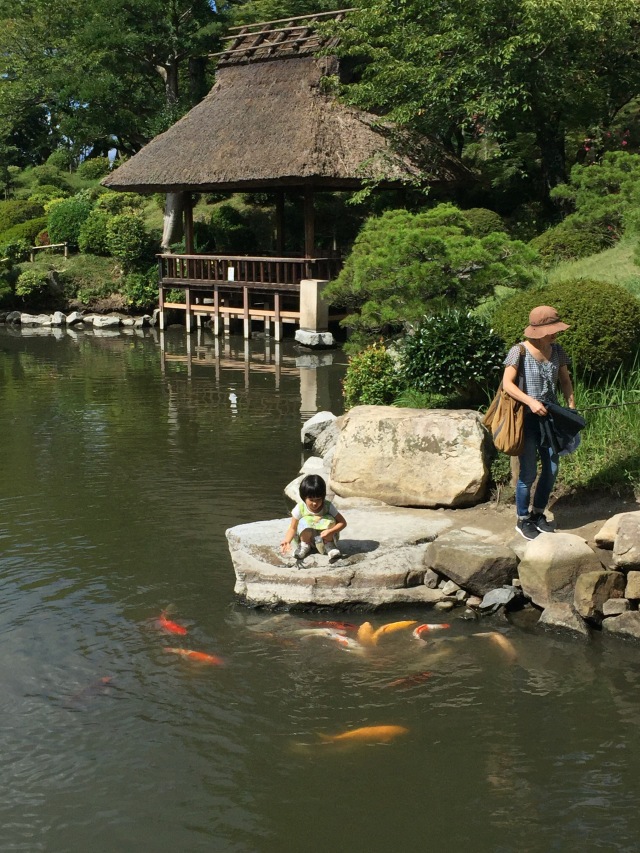 A perfect day trip from Hiroshima City is a visit to the sacred Miyajima Island. While the island is most famous for its near-domesticated deer population and “floating” torii gate, Miyajima has several additional attractions, including Mt. Misen, a beautiful, red, 5-story pagoda, and a vibrant shopping area.
A perfect day trip from Hiroshima City is a visit to the sacred Miyajima Island. While the island is most famous for its near-domesticated deer population and “floating” torii gate, Miyajima has several additional attractions, including Mt. Misen, a beautiful, red, 5-story pagoda, and a vibrant shopping area. 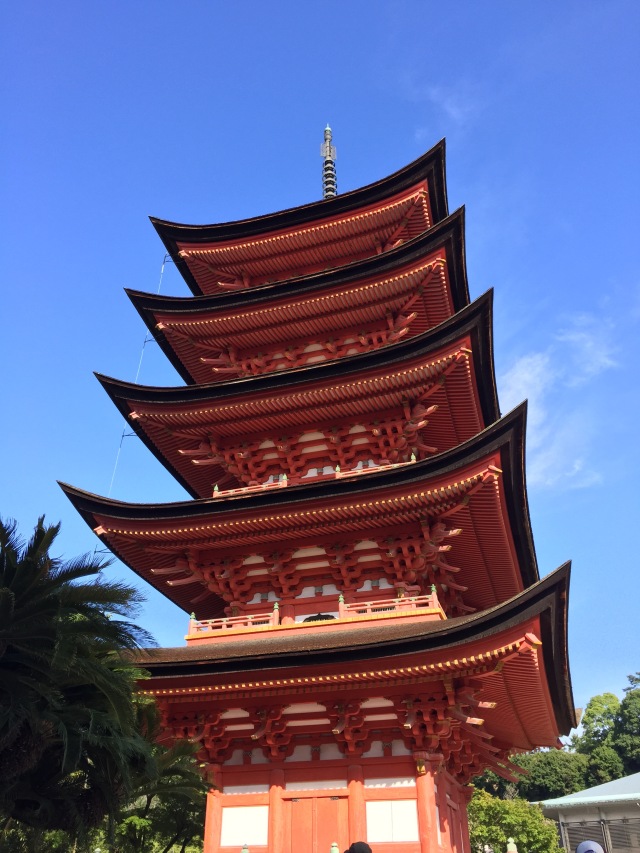 Miyajima is only accessibly by boat (approximately 4 USD round trip for a ferry trip). I started my tour at Itsukushima’s large torii gate, but since it was low tide, I decided to press on and return at the end of the day. This particular spot, as you can imagine, is swamped with tourists. As you walk from the ferry landing, a path takes you through a shaded road lined with souvenir shops and restaurants.
Miyajima is only accessibly by boat (approximately 4 USD round trip for a ferry trip). I started my tour at Itsukushima’s large torii gate, but since it was low tide, I decided to press on and return at the end of the day. This particular spot, as you can imagine, is swamped with tourists. As you walk from the ferry landing, a path takes you through a shaded road lined with souvenir shops and restaurants. Miyajima is famous for their oysters, and these are served at almost every corner! I found a great spot named “Miyajima Coffee” and stopped there for a delicious ice coffee and some Wi-Fi.
Miyajima is famous for their oysters, and these are served at almost every corner! I found a great spot named “Miyajima Coffee” and stopped there for a delicious ice coffee and some Wi-Fi.  It was a great spot to sit down for a short respite.
It was a great spot to sit down for a short respite.
After browsing the shops, I started the hike up to the ropeway station which leads to the top of Mount Misen. The ropeway station is about a 30 minute walk from the ferry landing, mostly uphill. It takes approximately 2-3 hours of hiking to get to the top of Mt. Misen without the ropeway, so I would only recommend this option if a longer stay has been planned (an some cardio in preparation!). The gondola ride to the top has expansive views of the entire area. If you visit on a clear day like I did, you will have the great opportunity at the top to soak in beautiful vistas of the entire Seto Inland Sea, including many islands.
If you visit on a clear day like I did, you will have the great opportunity at the top to soak in beautiful vistas of the entire Seto Inland Sea, including many islands.
The last ferry boat back to the mainland usually departs in the early evening (around 6 PM), so I had to stop touring and head back to downtown Hiroshima at the end of the day. Had I had more time, I would have liked to book a night’s stay on the island for a more personal experience at night after most of the tourists have left. Regardless of duration of stay, I enjoyed my time exploring and photographing the beautiful Miyajima Island!

